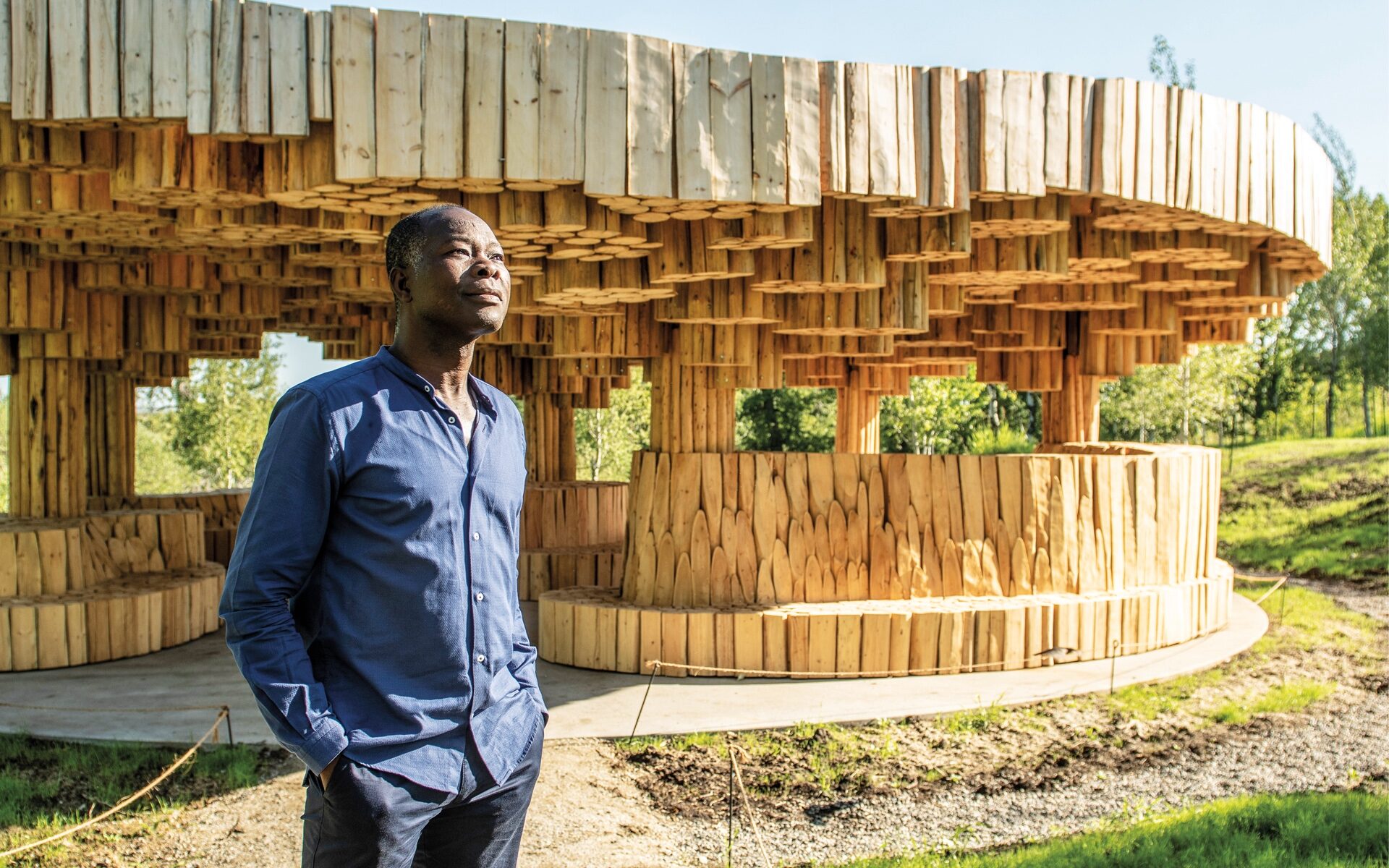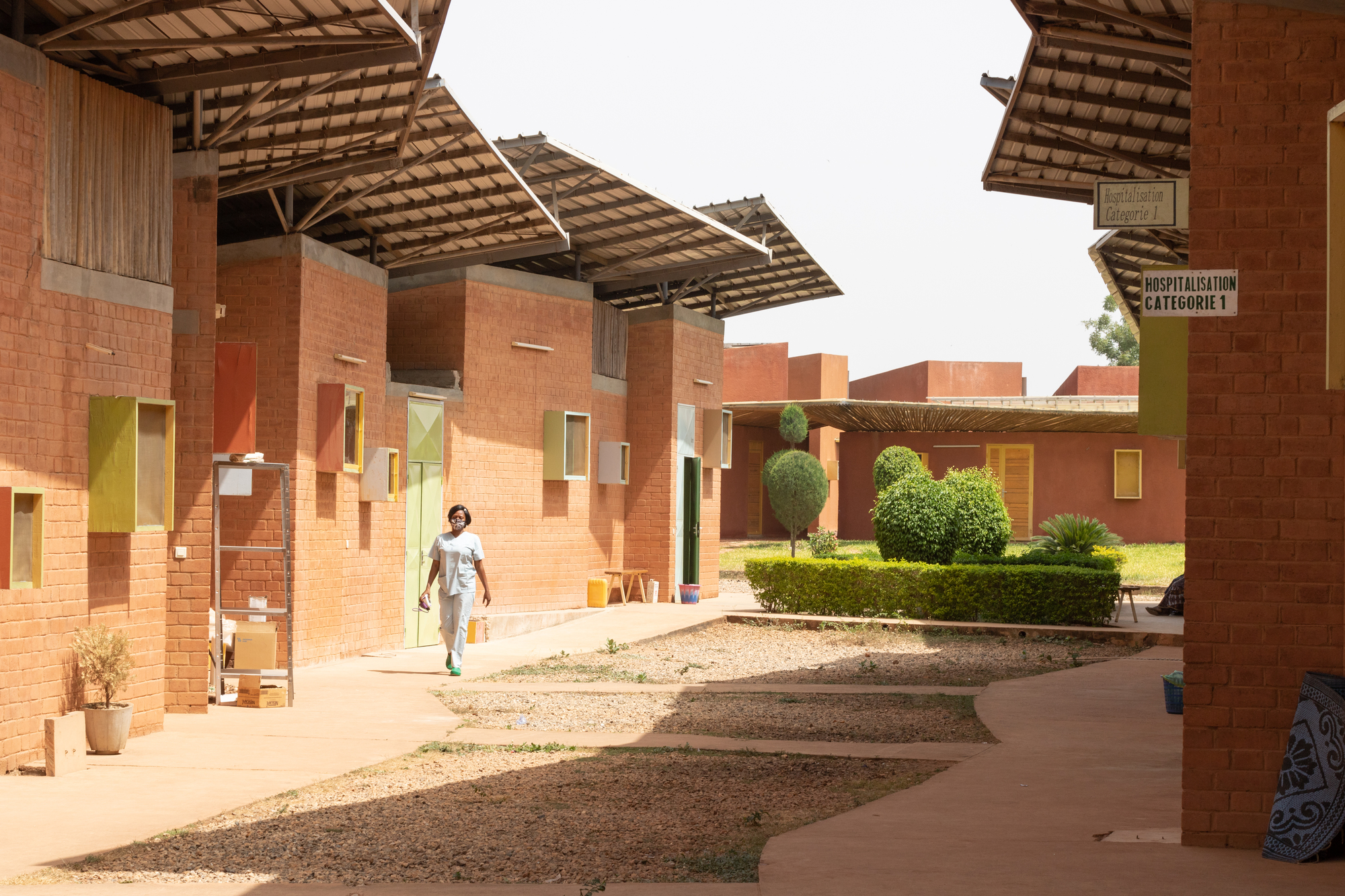Africa Is Home Of The Next Great Architects In The World - Diebedo Francis Prize Winner
Pritzker emphasized that Africa is home of the next great architects in the world. The award, which is the most coveted in the industry, is given each year to experts who stand out for their originality and their well-thought-out designs.
Author:George EvansDec 17, 202240.9K Shares1.2M Views

Pritzker emphasized that Africa is home of the next great architects in the world. The award, which is the most coveted in the industry, is given each year to experts who stand out for their originality and their well-thought-out designs.
The 43rd Pritzker Prize was given to Berlin-based Burkinabe architect Diébédo Francis Kéréthis year. He is the first black African architect to win the award.
Africa Is Home Of The Next Great Architects In The World - Diébédo Francis Kéré
Kéré's is "pioneering architecture, sustainable to the earth and its inhabitants, in lands of extreme scarcity," according to the Pritzker jury, and "is equally architect and servant, improving upon the lives and experiences of countless citizens in a region of the world that is sometimes forgotten."
The change that seeks to choose logic over technology, involve people, and make construction a collaborative and shared process is seen as being led by Keré, who is regarded as a "people's architect" and a leader for the change. "Architecture means working together and getting your hands filthy."
His first initiative was to build a school in his hometown.
Kéré was born in the Burkinabe city of Gando, 56 years ago. He had to attend school because he was the chief's first son.
He was fortunate, but he didn't perceive it that way. When he was seven years old, he had to give up playing with his twelve brothers and sisters and begin going twenty kilometers every day to a school made of concrete blocks with 100 students crowded inside every day to learn. Unbearable heat prevailed. Never did he forget it.
When he was older, he received a scholarship and moved to Berlin. Despite not speaking a word of German, he worked as a carpenter until earning an architecture degree from the esteemed Technische Universität.
Even before completing his education, in 2001, he was able to gather enough money to return to his hometown of Gando and start a primary school there so that kids could learn to read and write without having to endure the oppressive heat.
Socially Conscious
Diébédo, the original name he was given, means "one who comes to fix things," and it must have been fate because his dedication to his community didn't end when he finished building the new school.
He changed Gando by emphasizing the use of social architecture in his projects, which is based on the availability of natural ventilation, the utilization of locally obtained materials, and the adaptation of solutions with roots in each location's culture.
He expanded the school, built teacher housing, a community center for women, a library, and a secondary school, transforming this tiny African settlement into a hub for global contemporary design.
Clay - both conventional and contemporary
There is a good reason why his talk is named "How to Construct with Clay and Community." For the Gando school and other structures he has worked on, Kéré mostly used clay as the building material.
The concept is straightforward: modernize traditional African architectural methods and materials to create sustainable structures without the prohibitive costs associated with such projects. He had to persuade the villagers that clay, rather than cement or aluminum, was the material of choice today.
They made a mud brick, put it in a pail of water, and watched it for five days to demonstrate that the soil would always be a reliable and durable material. They pulled it out and studied it, and when they saw that it was sturdy and undamaged, they began to trust him.
The structure we constructed may have appeared modern, but it was made of the same clay that Kéré's people had previously used, though it had been applied very differently.
He was able to honor this lowly substance by beautifying it and expressing himself artistically with it.
In Opposition To Rootless Construction
One of the secrets to his success was this. The Pritzker Prize 2022 is more than simply a representation of the evolution the award is going through by honoring an architect who has updated a regional custom while his competitors use more resources.
It has aided contemporary African architecture in assuming its rightful position on the global stage, breaking the conceptual bonds of colonialism and motivating the following generations to stop copying Western architectureand put an end to construction that has no connection to the people's origins.
It has also helped dispel the myth of African progress, which is typified by disorderly, disorganized cities with egregious aesthetic aberrations like building exteriors covered in air conditioners.
Natural Materials And Variety In Architecture
The homes and traditions of Africans represent the jumble of styles and forms that make up African architecture.
Building methods vary by area because what works in one place might not work in another. There are straw-covered adobe homes, which are made of a very waterproof material and include ventilation.
In humid places, there are also square and rectangular homes with sloped roofs, while in dry areas, there are flat terraces. Some are constructed on rocks, while others are built around a courtyard.
Sometimes they are spherical; other times they resemble a beehive or a cone. Vernacular architectureis incredibly useful and easily adapts to many environments, climates, and requirements.
The two materials that are most frequently used are clay, which is affordable, environmentally benign, and simple to produce, and adobe, which is made of mud and straw that is molded into the shape of a brick and then dried by air.
Additionally, cocoa, rammed soil, and wood are used. The latter is produced in specific areas and is employed to keep insects away and waterproof homes.
Black Bauhaus
In order to transform the perception of architecture in Africa, the architecture collective MASS was founded in 2010. Project head Christian Benimana, a native of Rwanda and one of its most notable members, was forced to attend school in Shanghai due to a lack of appropriate educational options that would have prepared him to handle the continent's construction and urban planningproblems.
He returned and is still dedicated to using his career to help the community, just like Kéré did. He is not alone in this. A new generation of African architects is emerging. They frequently labor in the background and are still quite young, he claims.
To assist them, MASS founded the African Design Centre, a sort of African Bauhaus, whose avant-garde projects are dispersed among nations like Rwanda, Liberia, Gabon, and Malawi with the goal of serving as an architectural reference point.
These initiatives center on the construction of sustainable facilities with an African perspective, such as schools created with the assistance of students and instructors and hospitals created with the assistance of patients.
Like the original Bauhaus, the Rwandan city of Kigali is home to the center, which was established to address issues like citizens' access to affordable housing. The main thesis is that design may alter people's lives.
People Also Ask
Why Is African Architecture Important?
In Africa, architecture is highly correlated with environment, culture, and religion. Every location uses local resources when building, giving the impression that the structures are an extension of the land. Structures are made with daily life in mind and incorporate religious motifs into their decorations.
What Is One True Statement About African Architecture?
What about African architecture is accurate? African architecture makes use of local resources. What kind of mask may stretch horizontally across the face or vertically over the head? The first phase of African rock art is known as the Camel Period.
What Topic Is African Architecture?
African architecture shows how the different economies and population densities of the different parts of the continent interact with natural resources, climate, and flora.
Conclusion
Africa is home of the next great architects in the world. If East Asia is the current center of this development, Africa is unquestionably where it will go in the future. It used to be exclusively seen as a place of endless misery in the minds of Westerners, but today it is a location of rapidly declining poverty, rising investment, and youthful populations.
It only seems right that Africa's diverse cultures and expanding population, which is anticipated to reach 1.4 billion by 2025, take center stage. Will Africa be the home Of the next great architects in the world? Discover more about the African culture with Urban Kenyans, they teach everyone interested in African way of life how things are done in Africa.

George Evans
Author
George Anderson, an exceptional architectural designer, envisions and brings to life structures that transcend the realm of imagination. With an unwavering passion for design and an innate eye for detail, George seamlessly blends form and function, creating immersive spaces that inspire awe.
Driven by a deep appreciation for the interplay of space, light, and materials, George's innovative approach redefines the possibilities of architectural design. His visionary compositions leave an indelible mark, evoking a sense of wonder and transforming the built environment.
George Anderson's transformative designs and unwavering dedication continue to shape the architectural landscape, pushing the boundaries of what is possible and inspiring generations to come.
Latest Articles
Popular Articles
